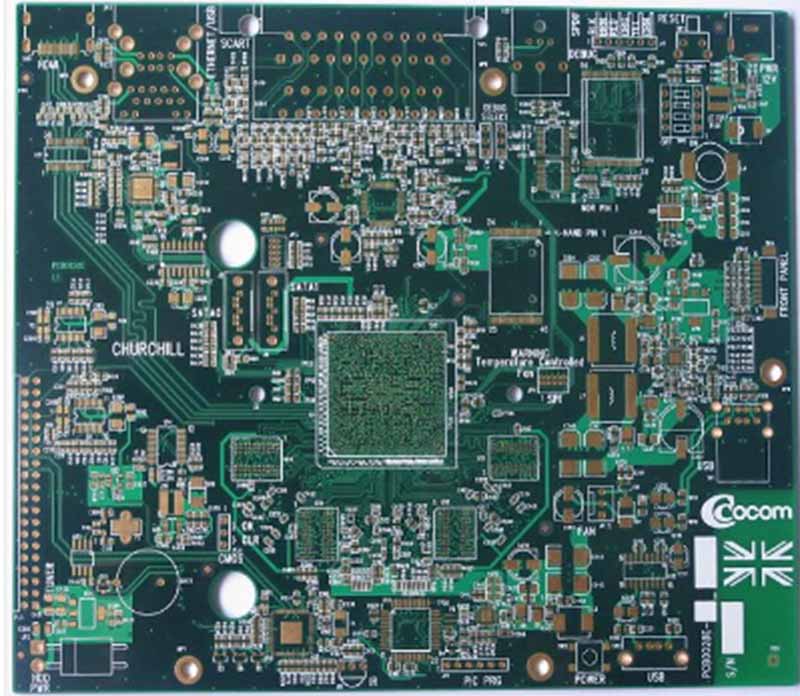Определение провода заземления
В проектировании печатных плат.Что такое заземляющий провод? Определение заземляющего провода, которое все изучают в учебниках, гласит: заземляющий провод - это эквипотенциальное тело, используемое в качестве точки отсчета потенциала цепи. Это определение не соответствует действительности. Потенциал на реальной линии заземления не является постоянным. Если с помощью измерительного прибора измерить потенциал между точками на линии заземления, вы обнаружите, что потенциал точек на линии может резко меняться. Именно эта разность потенциалов и является причиной ненормальной работы цепи. Определение цепи как эквипотенциального тела - это всего лишь представление людей о потенциале земли. Генри дал более реалистичное определение линии. Он определил заземляющий провод как низкоомный путь для прохождения сигнала обратно к источнику. Придерживаясь этого определения, легко понять причину разности потенциалов в заземленной линии. Поскольку сопротивление заземления никогда не будет равно нулю, при прохождении тока через конечное сопротивление возникает падение напряжения. Поэтому мы должны представить себе потенциал на заземляющем проводе как волны на море, одна за другой.
сопротивление заземления
Говоря о разности потенциалов между точками на линии, вызванной сопротивлением линии, что может привести к неисправности схемы, многие люди считают невероятным: когда мы используем омметр для измерения сопротивления линии, сопротивление линии обычно находится на уровне миллиома. Как может произойти такое падение напряжения, когда ток протекает через столь маленькое сопротивление, что приводит к аномалии в работе схемы.

Механизмы наземных помех
общий импеданс помехи, когда две цепи соединяются на одном участке заземления, из - за сопротивления заземления потенциал заземления одной цепи модулируется рабочим током другой цепи. сигнал в этой цепи будет связан с другой схемой, которая называется общей импедансной связью.
в цифровых схемах из - за высокой частоты сигнала заземляющие линии обычно характеризуются большим сопротивлением. в это время, если различные схемы соединяются на одном участке, может возникнуть проблема связи с общим сопротивлением
Меры по борьбе с наземными помехами
в проектировании печатных плат, контур заземления контрмеры Из механизма помех контура заземления известно, что только уменьшая ток в контуре заземления, можно уменьшить помехи контура заземления. Если ток в контуре заземления полностью устранен, проблема помех контура заземления может быть полностью решена. Поэтому мы предлагаем следующие решения проблемы помех контура заземления.
A.Если один конец цепи плавающий, то контур заземления будет отрезан, что исключит ток в контуре заземления. Но есть два момента, на которые следует обратить внимание. Во-первых, по соображениям безопасности, цепи часто не разрешается плавать. Теперь рассмотрим заземление устройства через индуктор. таким образом, для 50 Гц переменного тока оборудования, сопротивление заземления очень мало, и для более высокой частоты помех сигналов, больше оборудования заземления, уменьшая ток контура заземления. Но это только уменьшает высокочастотные сигналы помех. Другая проблема, хотя оборудование является плавающим, есть еще паразитная емкость между устройством и землей. емкость будет обеспечивать низкое сопротивление на высокой частоте, поэтому он не может эффективно уменьшить высокочастотный ток контура заземления.
B.использование трансформаторов для обеспечения связи между оборудованием. для отключения тока в заземлённом контуре используется магнитная цепь, соединяющая два устройства. Вместе с тем следует отметить, что паразитная емкость между первичными и вторичными трансформаторами по - прежнему обеспечивает путь к току в высокочастотном контуре заземления, поэтому метод изоляции трансформаторов менее эффективен, чем подавление тока в высокочастотном контуре заземления. одним из способов повышения эффективности высокочастотной изоляции трансформаторов является установка экранов между первичными и вторичными трансформаторами. Однако следует иметь в виду, что заземляющий конец экранной защиты от трансформаторов должен находиться в конце приемной цепи.В противном случае не только не повысится эффективность высокочастотной изоляции, но и усилится высокочастотная связь. Поэтому трансформаторы должны быть установлены на стороне устройства приёма сигналов.Хорошо защищенные трансформаторы могут обеспечивать эффективную изоляцию на частотах ниже 1 МГц.
С.другой способ отключения заземляющего контура с помощью светоотделителей заключается в использовании света для передачи сигналов. Это можно назвать идеальным способом решения проблемы помех в цепи заземления. оптическое соединение состоит из двух методов: оптических средств связи и оптических волоконно - оптических соединений. паразитная емкость оптической связи обычно составляет 2pf, что обеспечивает хорошую изоляцию при очень высоких частотах. на волоконно - оптических приборах практически нет паразитных емкостей,но они менее эффективны с точки зрения установки, обслуживания и затрат.
использование синфазного дросселя на соединительных кабелях равносильно увеличению сопротивления контуров заземления для контура заземления при определенном напряжении заземления
ток цепи уменьшится. Однако следует обратить внимание на паразитную емкость для регулирования синфазного дросселя, иначе помехи высокой частоты будут иметь плохой эффект изоляции. Чем больше синфазный дроссель, тем больше паразитная емкость, тем меньше эффект высокочастотной изоляции.
Устранение связи по общему сопротивлению Существует два способа устранения связи по общему сопротивлению. Первый - уменьшить сопротивление общего провода заземления, чтобы напряжение на общем проводе заземления также уменьшилось, общая импедансная связь. Другой метод заключается в том, чтобы избежать общего провода заземления цепей, которые легко мешают друг другу, путем надлежащего заземления. В общем, избегайте общего провода заземления цепей с сильным и слабым током, общего заземления цифровых и аналоговых цепей. Как уже говорилось, основная цель снижения сопротивления заземления - уменьшить индуктивность заземления. Это включает в себя использование плоского проводника в качестве геоида, и использование нескольких параллельных проводников, которые находятся далеко друг от друга в качестве провода заземления. печатной платы, укладка сетки провода заземления на двухслойной плате может эффективно уменьшить импеданс провода заземления. в многослойной плате, специальный слой провода заземления имеет небольшой импеданс, но это увеличит сопротивление платы PCBâs. стоимость производства.
Метод заземления, позволяющий избежать общего импеданса благодаря правильному способу заземления, - параллельное одноточечное заземление. Недостатком параллельного заземления является слишком большое заземление. поэтому на практике не все цепи должны быть подключены к одной точке. Для цепей с меньшим количеством взаимных помех используется одноточечное последовательное заземление. Например, цепи можно классифицировать по сильным сигналам, слабым сигналам, аналоговым сигналам, цифровым сигналам и т. д., а затем использовать одноточечное заземление последовательно в пределах аналогичных цепей, одноточечное параллельное заземление с различными типами цепей.